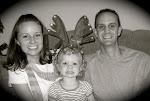We are in the midst of the Carnaval Celebrations in Bolivia. It's basically Mardi Gras on steroids and it takes place all over South America, with each culture having it's own specific meanings and traditions. As promised, below is some general information on what Carnaval is. We will include some of our own personal experiences in blogs to follow.
"Carnaval takes place for the eight days preceeding Ash Wednesday. Unlike carnaval in Rio De Janeiro where the escolas de samba choose a new theme each year, carnaval in Bolivia always begins with the diablada or devil dance. The diablada is a centuries-old ritual surviving unchanged from colonial days.
Next are hundreds of devils in monstrous costumes. The heavy masks have horns, bulging eyes, fangs, long hair and in contrast to the frightening masks the devils wear sparkling breastplates, silk embroidered shawls and golden spurs. Between the devils, groups of dancers dressed as monkeys, pumas and insects caper to the music from brass bands, or pipers or drummers. The noise is loud and frenzied.
Out of the devil dancers comes China Supay, the Devil's wife, who dances a seductive dance to entice the Archangel Michael. Around her, dance the members of local workers unions, each carrying a small symbol of their union such as pickaxes or shovels. Dancers dressed as Incas with condor headdresses and suns and moons on their chests dance along with dancers dressed as the black slaves imported by the Spaniards to work in the silver mines.
Family members led by the matriarchs in yellow dresses appear in order: first the husbands dressed in red, next come the daughters in green, followed by the sons in blue. The families dance their way to the football stadium where the next part of the celebrations takes place.
Two plays begun, as medieval mystery plays, are enacted. The first portrays the Conquest by the Spanish conquistadores. The second is the triumph of the Archangel Michael as he defeats the devils and the Seven Deadly Sins with his flaming sword. The results of the battle are announced and the Patron Saint of the Miners, the Virgen del Socavon, and the dancers sing a Quecha hymn.
Although the references to the Spanish conquest and the downtrodden state of the Bolivian peasants are very clear, this festival is based on the pre-Colonial ceremony of giving thanks to the earth-mother Pachamama. It commemorates the struggles of good and evil and the early Catholic priests allowed it to continue with a Christian overlay in an effort to pacify the local natives.
The celebration of carnaval continues for days (normally 5 days in Sucre) as the diablada dancers break into smaller groups and continue dancing around huge bonfires. Onlookers join the procession at any point and with the consumption of strong Bolivian beer and the very potent chicha, made from fermented cereals and corn, they get rowdy. Many sleep in doorways or where they fall until they awake and continue celebrating."



1 comment:
Wow, sounds...rowdy...and loud. Hope you were able to keep John out of all the trouble these last few days :) love and miss ya. how did ella handle the monster masks?!
Post a Comment